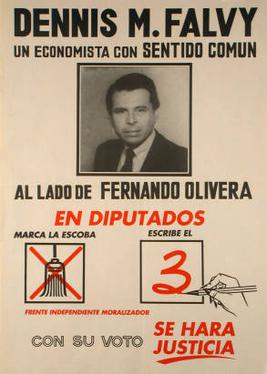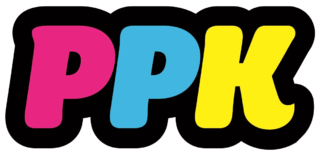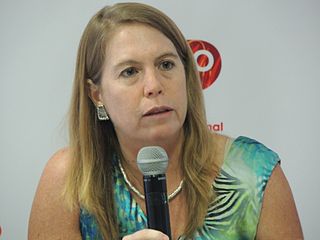| Edition | Date | Venue | Slogan / Main theme | Chair of the Organizing Committee |
|---|
| 1 | September 14–18, 1961 | Hotel Paracas, Paracas | Greater efficiency, rise of production: Keys to economic and social progress | Carlos Mariotti |
| 2 | September 20–24, 1962 | Hotel Paracas, Paracas | Best Executives for a Better Peru | Carlos Mariotti |
| 3 | August 29 – September 2, 1963 | Paracas | The dynamism of political structures | Carlos Mariotti |
| 4 | September 30 – October 3, 1965 | Paracas | The economic society of the national capital market | Rodolfo Beek |
| 5 | October 6–9, 1966 | Paracas | Companies in the national development | Rodolfo Beek |
| 6 | September 28 – October 1, 1967 | Paracas | Peru in 1975 | Rodolfo Beek |
| 7 | November 21–24, 1968 | Paracas | Infrastructure as a means of national and regional integration | Federico Costa y Laurent |
| 8 | October 23–26, 1969 | Paracas | Peru facing the challenge of integration: critical areas and priorities | Federico Costa y Laurent |
| 9 | November 13–15, 1970 | Paracas | Peru: new industrial society | Samuel Drassinower |
| 10 | November 18–21, 1971 | Paracas | National Development Plan | Luis Paredes Stagnaro |
| 11 | November 16–19, 1972 | Paracas | Employment: a priority factor for socio-economic development | Walter Piazza Tangüis |
| 12 | November 1973 | Paracas | Present and perspectives of Andean integration | Luis Paredes Stagnaro |
| 13 | November 14–17, 1974 | Paracas | Companies and revolution | Pedro Reiser |
| 14 | October 16–19, 1975 | Trujillo | The company and social promotion | Teresa Pareja Liñán |
| 15 | November 18–21, 1976 | Hotel de Turistas, Arequipa | Economic recovery: national challenge | Daniel Rodríguez Hoyle |
| 16 | November 17–20, 1977 | Cusco | Business action for decentralized development | Gonzalo Raffo Uzátegui |
| 17 | November 16–19, 1978 | Paracas | Peru in the 80s | Felipe Ortiz de Zevallos |
| 18 | November 25–28, 1979 | Tacna | Peru: problems and solutions | Alberto Sacio León |
| 19 | November 27–30, 1980 | Paracas | Production and employment 1980–1985 | Bernardo Rehder Remy |
| 20 | November 11–14, 1982 | Hotel de Turistas, Selva Alegre, Arequipa | Goals and strategies for a national development plan | Juan Álvaro Lira Villanueva |
| 21 | November 17–20, 1983 | Ica | Economic improvement: challenge for all | Juan Antonio Aguirre Roca |
| 22 | November 21–24, 1984 | Hotel Crillón, Lima | Business consensus for a national development plan | Alberto Sacio León |
| 23 | November 21–24, 1985 | Hotel Las Dunas, Ica | The challenge of change | Felipe Ortiz de Zevallos |
| 24 | November 13–16, 1986 | Huaraz | Production: commitment of the present time | Óscar Espinosa Bedoya |
| 25 | November 26–29, 1987 | Iquitos | Peru: crisis and future | Juan Incháustegui Vargas |
| 26 | November 18–20, 1988 | Lima | Peru 2021, let's build its future | Alfredo Novoa Peña |
| 27 | November 30 – December 2, 1989 | Hotel El Pueblo, Santa Clara, Lima | Foundations for development | Oswaldo Sandoval Aguirre |
| 28 | November 22–25, 1990 | Hotel Las Dunas, Ica | The possible Peru: challenge and opportunities | Francisco Secada Paredes |
| 29 | November 28 – December 1, 1991 | Arequipa | Corporate responsibility in the national development | Guillermo Van Oordt |
| 30 | December 3–6, 1992 | Hotel Las Dunas, Ica | Peace and social welfare: let's assume responsibilities | José Chlimper Ackerman |
| 31 | November 2–5, 1993 | Arequipa | Proposals for a consensus for Peru | Carlos Morelli Zavala |
| 32 | December 1–4, 1994 | Hotel Las Dunas, Ica | Productive employment: everyone's responsibility | Gonzalo Galdós |
| 33 | November 1–4, 1995 | Cusco | Peru company: towards a society for growth | Oscar Rivera Rivera |
| 34 | December 5–8, 1996 | Arequipa | Peru 21st century: proposals for a shared vision | Drago Kisic Wagner |
| 35 | December 4–7, 1997 | Hotel Las Dunas, Ica | Commitments of a shared vision, agenda to 2001 | Alfredo Romero Vega |
| 36 | November 6–8, 1998 | Universidad de Piura, Piura | Challenges of the present and strategies of the future | Francisco Gonzales García |
| 37 | January 20–23, 2000 | Hotel El Pueblo, Santa Clara, Lima | 21st Century: Proposals for a progressing Peru | Baldo Kresalja |
| 38 | January 24–27, 2001 | Hotel El Pueblo, Santa Clara, Lima | Peru: In what country do we want to live? | Susana Eléspuru |
| 39 | November 10–12, 2001 | Universidad Católica Santo Toribio de Mogrovejo, Chiclayo | Competing: a joint effort for the prosperity of all | Raúl Otero |
| 40 | November 28–30, 2002 | Hotel El Pueblo, Santa Clara, Lima | Competing to win: the unpostponable challenge | Carmen Rosa Graham |
| 41 | November 19–21, 2003 | Hotel Las Dunas, Ica | Institutionality: clear rules for investment | Rafael Fernández Stoll |
| 42 | October 21–23, 2004 | Universidad Privada Antenor Orrego, Trujillo | Integration to the world: the response to unemployment | Eduardo Razzetto |
| 43 | December 1–3, 2005 | Hotel El Pueblo, Santa Clara, Lima | Clear rules to govern: Let us choose the future of Peru together | José Chueca |
| 44 | November 30 – December 2, 2006 | Arequipa | Inclusion and development for all | Ben Schneider Shpilberg |
| 45 | November 29 – December 1, 2007 | Universidad Privada Antenor Orrego, Trujillo | All we need to be a fair and prosperous country | Diego de la Torre |
| 46 | October 30–31, 2008 | Hotel El Pueblo, Santa Clara, Lima | The reform of the private sector | Fernando Zavala Lombardi |
| 47 | November 19–21, 2009 | Hotel Libertador, Arequipa | Our future, our opportunity | Óscar Rivera |
| 48 | November 11–13, 2010 | Urubamba, Cusco | Competitiveness: towards prosperity for all | Julio Luque |
| 49 | December 1–3, 2011 | Cusco | Innovation: Let us accelerate the transformation of Peru | Carlos Heeren |
| 50 | November 29 – December 1, 2012 | Centro de Convenciones Cerro Juli, Arequipa | Business leaders, commitment to Peru | Luis Torres Marisca |
| 51 | November 27–29, 2013 | Paracas | Our commitment is to turn words into achievements | Ricardo Briceño |
| 52 | November 12–14, 2014 | Paracas | Let's make Peru a first world country | Pablo de la Flor |
| 53 | December 2–4, 2015 | Paracas | Peru needs changes to continue growing | Elena Conterno |
| 54 | November 30 – December 2, 2016 | Paracas | Challenge 2021: the opportunity is now | Alfredo Torres |
| 55 | November 29 – December 1, 2017 | Paracas | One Peru, no more separate strings | Drago Kisic Wagner |
| 56 | November 28–30, 2018 | Paracas | Business leadership for a modern Peru | Gonzalo Aguirre |















